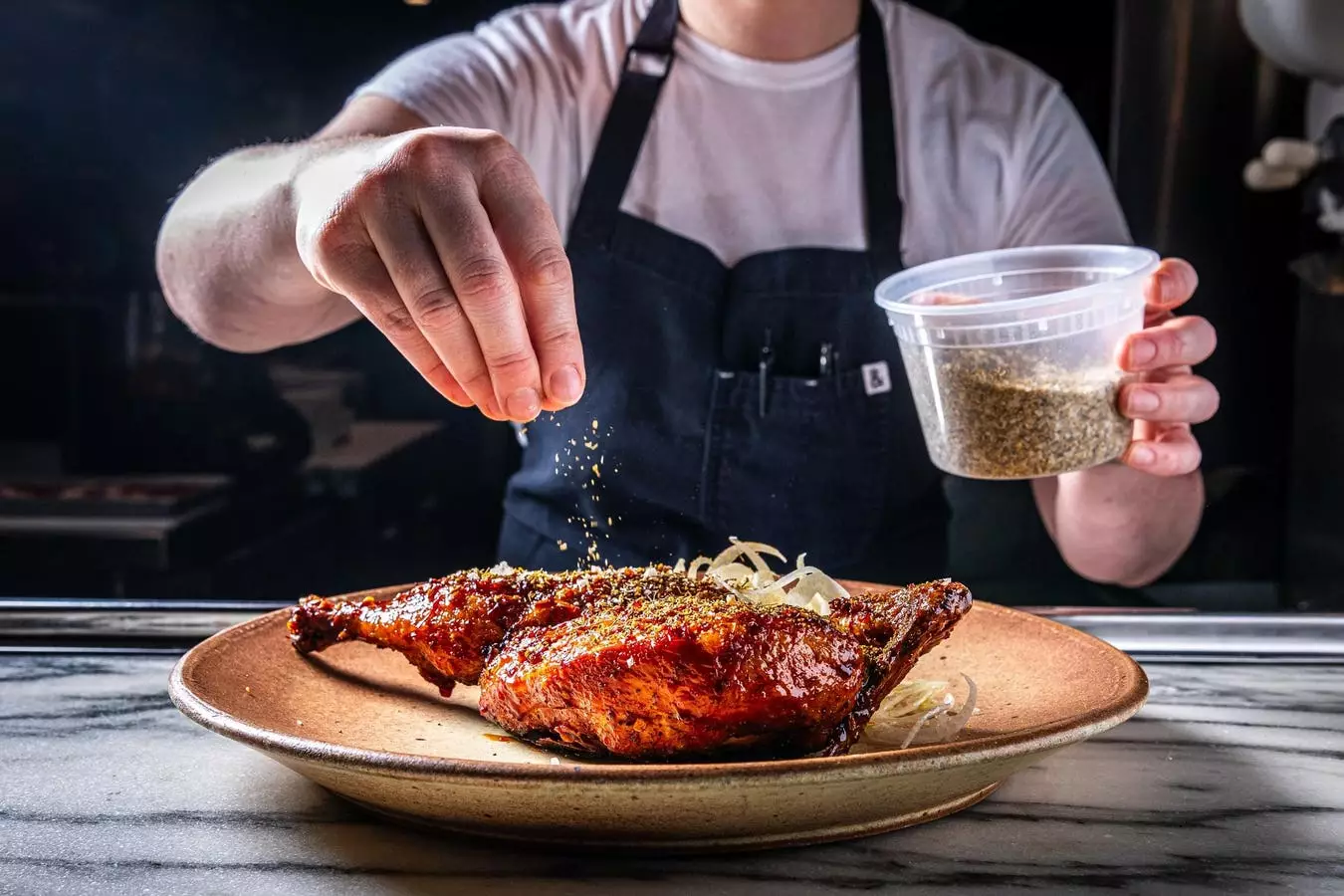In recent months, hot honey has emerged as a culinary sensation, rapidly becoming a staple in kitchens and restaurants across the US and UK. This unexpected rise has captured the attention of chefs and home cooks alike, showcasing its versatility as a condiment that can enhance everything from pizzas to chicken wings, and even gourmet cheeses. Market research suggests that this spicy-sweet blend is not merely a fleeting trend but a transformative ingredient that is reshaping how we approach flavor combinations.
As we explore the factors behind hot honey’s meteoric rise, it’s crucial to highlight its impact on the food industry. For instance, Everyman Cinema in the UK reported a significant increase in food and drink revenues—rising by 59% to £32.2 million (approximately $40.4 million)—thanks in part to their innovative use of hot honey in menu items like halloumi. This growth reflects a broader trend wherein consumers are increasingly drawn to bold flavors, seeking new and exciting culinary experiences.
While the fusion of honey and chili may seem like a novel idea, its roots extend far back into culinary history. Countries like Brazil have long embraced the concept of ‘hot honey’ for both culinary and medicinal purposes. However, the hot honey that is captivating modern taste buds traces its popularity back to Mike Kurtz, a resident of Brooklyn who pioneered his own brand, Mike’s Hot Honey, in 2010. By introducing this flavor profile to local pizzerias, Kurtz ignited a trend that eventually spread through popular food markets, upscale restaurants, and ultimately, social media platforms.
The entry of brands like Wilderbee, created by chef Dan Shearman in the UK in 2014, marked a significant moment for hot honey in Europe. The infusion of bold ingredients such as scotch bonnets and gochujang gave consumers a taste of the potential this condiment held. However, it was the rise of TikTok that truly accelerated hot honey’s entrance into the mainstream. With hundreds of thousands of users creating fun videos showcasing creative uses for hot honey, interest surged, leading to increased Google searches and a rush by supermarkets to stock this trending condiment.
The fascination with hot honey involves more than just innovative flavors; it’s about the economic implications of its general acceptance in the marketplace. As consumer preferences evolve, shoppers are willing to invest in products that offer more than just basic functionality. Hot honey represents a unique blend of artisanal quality and widespread accessibility—a combination that speaks to the growing desire for higher-quality food experiences without premium price tags.
Supermarkets and retailers recognize the potential for hot honey as a simple yet premium product. Its adaptability makes it suitable for a myriad of culinary applications, from drizzling over burgers and roasted veggies to dipping sweet desserts or mixing into cocktails. It’s this artisanal charm combined with mass-market appeal that signifies what today’s savvy consumers want: authenticity without pretentiousness.
Many culinary experts argue that hot honey is more than just a fun condiment; it symbolizes a larger shift in global eating habits characterized by the fusion of flavors. Honey, long celebrated for its sweetness and health benefits, is now paired with the intense spice of chili, creating a harmonious balance that appeals to contemporary palates. This intersection of old and new culinary traditions resonates deeply with consumers who are eager to explore distinct flavors from around the world.
Moreover, as food culture continues to evolve, the versatility of hot honey ensures it will remain relevant in kitchens around the globe. Chefs are experimenting with it in various applications, leading to inventive dishes that excite the culinary landscape. From pastries topped with hot honey glaze to crafted cocktails garnished with its signature sweetness and heat, creative pairings will undoubtedly become a significant part of dining experiences.
As we observe the rise of hot honey, it’s evident that this condiment is set to remain a prominent feature in the culinary world. Its blend of flavors, economic viability, and adaptability in various culinary contexts all contribute to its continuing popularity. People are not merely experimenting with hot honey; they are embracing it.
Hot honey is more than a passing food trend; it is an emblem of changing taste preferences and a greater cultural fascination with fusion foods. From artisanal kitchens to the dinner tables of everyday consumers, its sweet heat is here to stay, promising a flavorful future in our ever-evolving culinary landscape.

